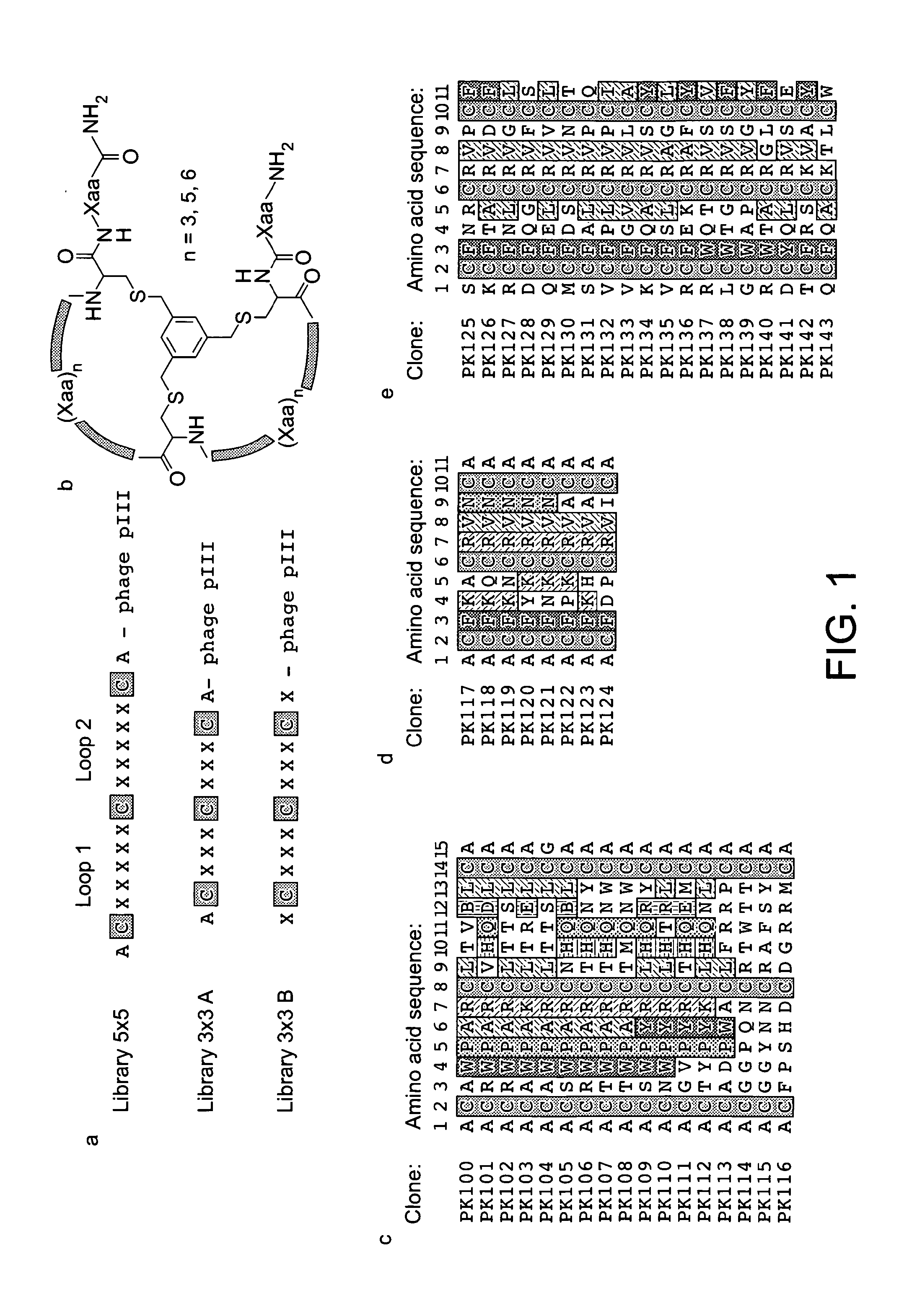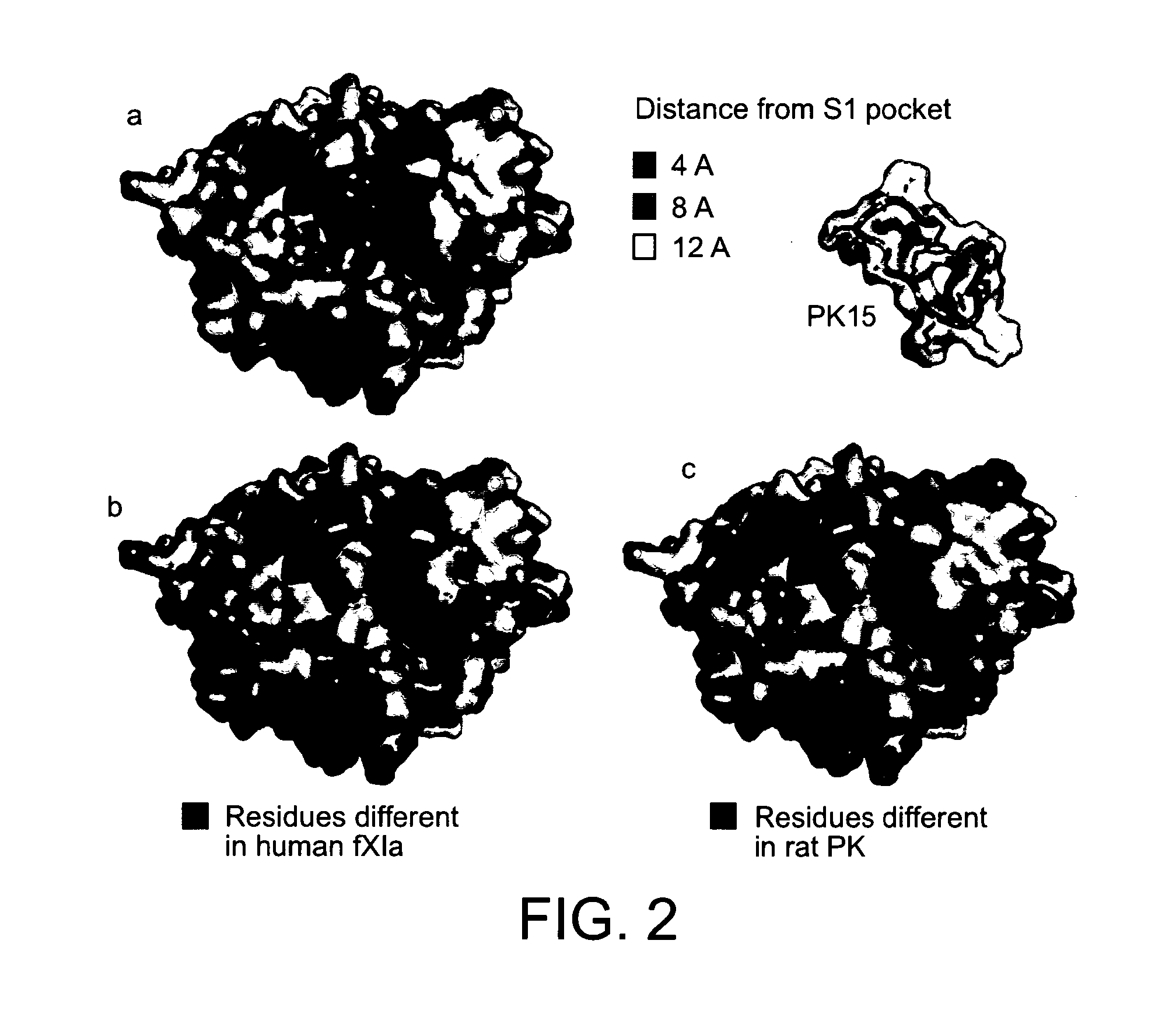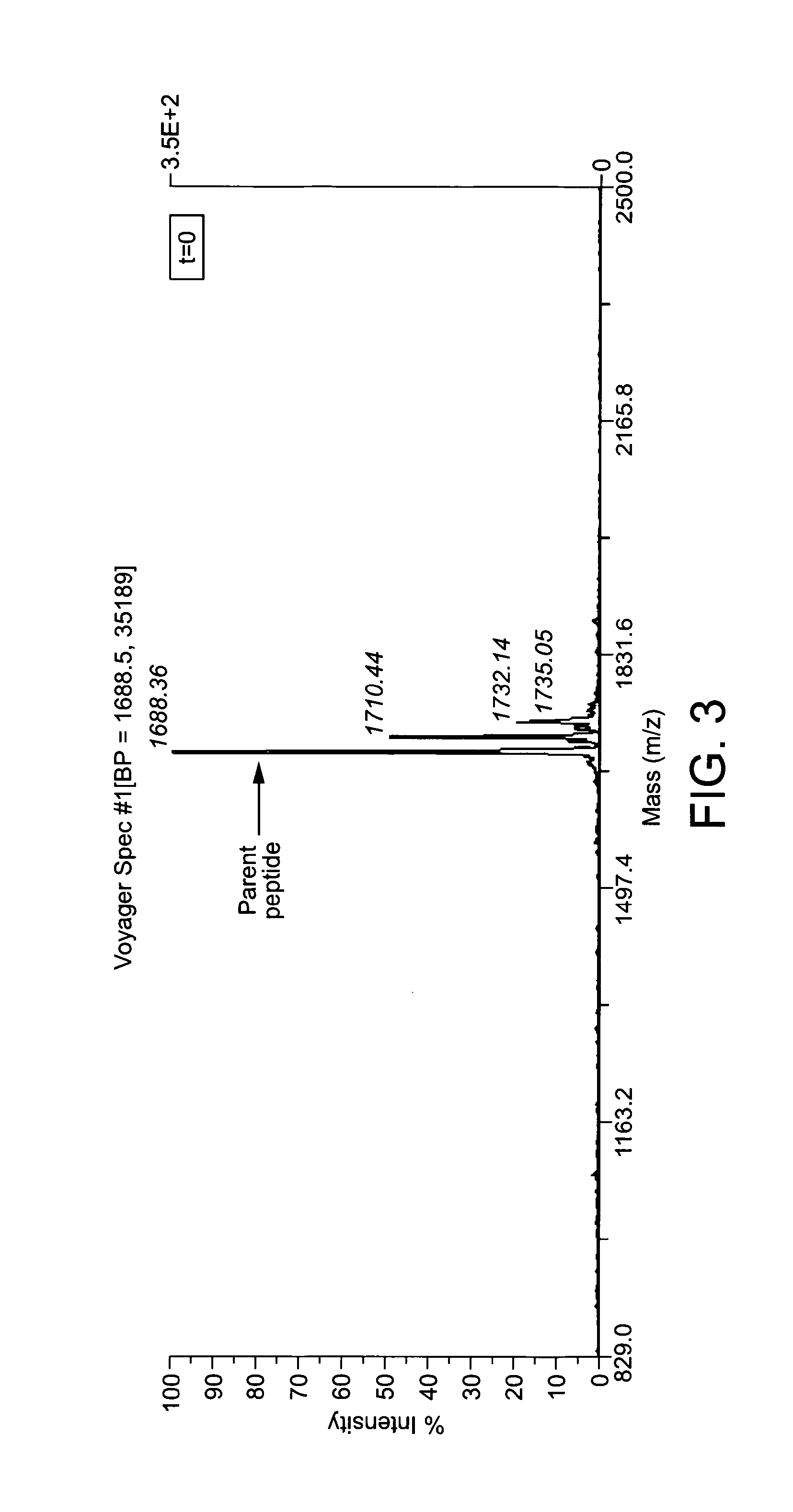Modulation of structured polypeptide specificity
a polypeptide and specificity technology, applied in the field of polypeptides, can solve the problems of preventing the preclinical testing of pk15 in small laboratory animals, preventing experiments and tests normally conducted on laboratory animals, and other species impede the use of structured polypeptides, etc., to achieve the effect of convenient attachment to biomolecules, efficient protein transport, and enhanced cell penetration
- Summary
- Abstract
- Description
- Claims
- Application Information
AI Technical Summary
Benefits of technology
Problems solved by technology
Method used
Image
Examples
example 1
Selection of Peptides with Differing Loop Length
[0172]In inhibition assays with a large panel of serine proteases, we confirmed the high target specificity of the recently developed bicyclic peptide inhibitor PK15 as well as its poor activity towards murine PK. In an attempt to identify PK inhibitors with a lower specificity, which might cross-react with PK from other species, we screened phage libraries of varying sizes of bicyclic peptides. This approach was challenging since some paralogous human serine proteases (e.g. hfXIa) are no more different in their amino acid sequences from hPK than murine PK differs from hPK (e.g. hfXIa and rPK both share 69% sequence identity with hPK) (Table 2 and FIG. 2).
[0173]Genetically encoded combinatorial libraries of bicyclic peptides were produced by displaying linear peptides of the format Cys-(Xaa)n-Cys-(Xaa)n-Cys (n=number of random amino acids Xaa) on phage and subsequent chemical cyclisation of the three cysteine side chains with tris-(bro...
example 2
Determination of Specificity
Target Specificity Towards Paralogous Serine Proteases
[0175]The target specificity of the isolated bicyclic peptide inhibitors was assessed by determining the inhibition of trypsin-like human serine proteases of the class S1A which comprises 79 members (Yousef, et al, Biochem Biophys Res Commun 2003, 305 (1), 28-36). The panel of proteases included hfXIa which shares the highest sequence identity with hPK (69%) as well as the structurally less related but vital human serine proteases thrombin (36%), plasmin (34% sequence identity with hPK) and factor XIIa (35%). Similar as PK15, the two tested peptides isolated from the 5×5 library, 2A2 and 2A10, did not inhibit any of the paralogous proteases at the highest concentration tested (100 μM) with the exception of clone 2A10 which weakly inhibited human plasmin (Ki=27 μM). The smallest bicyclic peptides isolated from the 3×3 library did not inhibit thrombin, plasmin and factor XIIa, but inhibited hfXIa as effe...
example 4
Systematic Analysis of Plasma Stability
[0182]For a kallikrein-inhibiting bicycle, it is pertinent to obtain an adequate protease stability profile, such that it has a low protease-driven clearance in plasma or other relevant environments. In a rapid comparative plasma stability assay (methods section, method 1) that observed the progressive disappearance of parent peptide in rat plasma, it was found that the N-terminal alanine (which is present at the time of selections and was originally included in synthetic peptides of lead sequences) is rapidly removed across all bicycle sequences tested by both rat and human plasma. This degradation was avoided by synthesising a lead candidate lacking both N- and C-terminal alanines. To remove potential recognition points for amino- and carboxypeptidases, the free amino-terminus that now resides on Cys 1 of the lead candidate is capped with acetic anhydride during peptide synthesis, leading to a molecule that is N-terminally acetylated. In an e...
PUM
| Property | Measurement | Unit |
|---|---|---|
| weight | aaaaa | aaaaa |
| pH | aaaaa | aaaaa |
| cell density | aaaaa | aaaaa |
Abstract
Description
Claims
Application Information
 Login to View More
Login to View More - R&D
- Intellectual Property
- Life Sciences
- Materials
- Tech Scout
- Unparalleled Data Quality
- Higher Quality Content
- 60% Fewer Hallucinations
Browse by: Latest US Patents, China's latest patents, Technical Efficacy Thesaurus, Application Domain, Technology Topic, Popular Technical Reports.
© 2025 PatSnap. All rights reserved.Legal|Privacy policy|Modern Slavery Act Transparency Statement|Sitemap|About US| Contact US: help@patsnap.com



